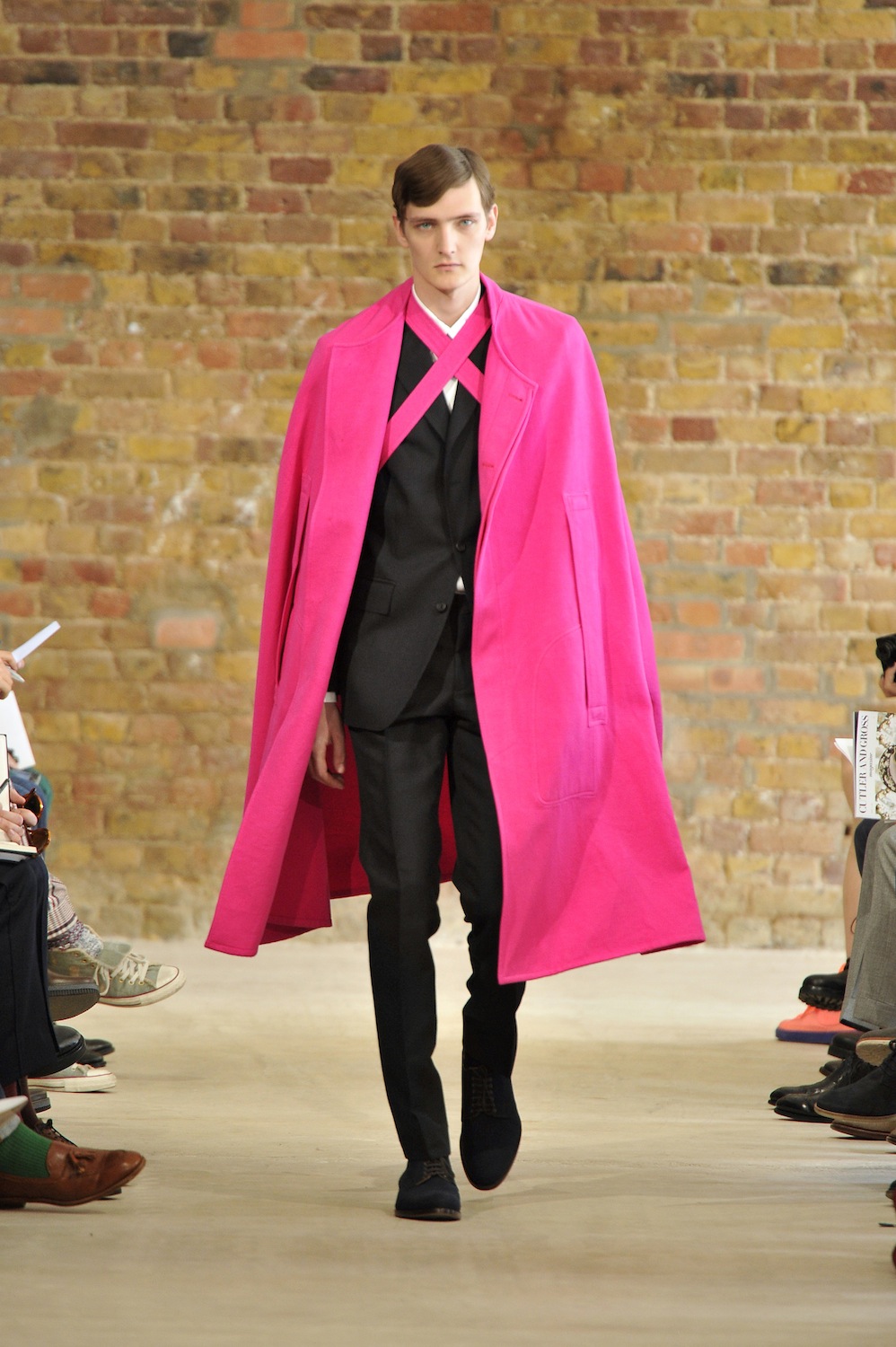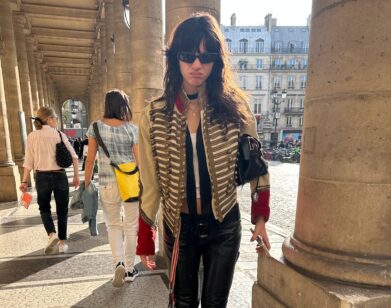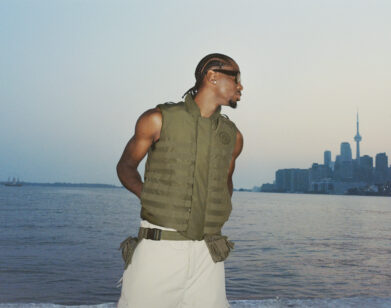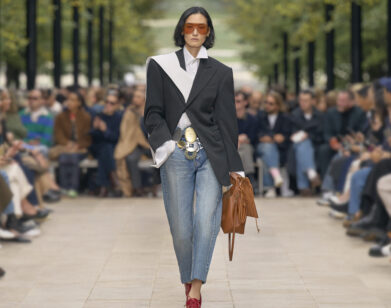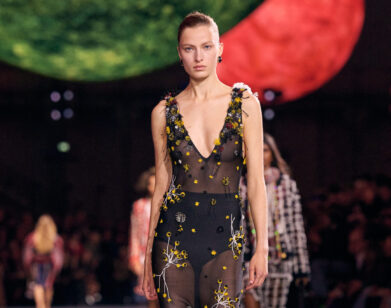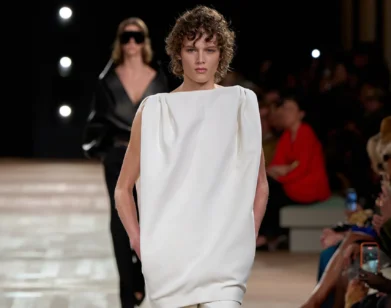The Princes of London
This past weekend marked London’s inaugural men’s fashion week. The three-day event was a much-welcomed step forward for Britain’s growing group of menswear designers, who were formerly made to pack their presentations into one day at the tail end of the womenswear shows. The festivities kicked off Thursday evening with an intimate cocktail party hosted by British fashion’s newest ambassador, Prince Charles, who ironically invests in a new look about once every 25 years. And while it’s unlikely that the eclectic Spring/Summer offerings shown on the catwalks would suit His Majesty, the swarm of international press and buyers (many of whom had skipped London’s men’s day in seasons past) were left with lots to talk about.
There is, of course, a tension between the city’s traditional Savile Row tailoring and the expressions of manic sartorial rebellion put forth by London’s thriving flock of up-and-comers. Patrick Grant of E. Tautz (an historic firm founded in 1883 which once counted Winston Churchill amongst its lofty clientele) embraced both ends of the city’s fashion spectrum. Inspired by Sir Wilfred Thesiger, a rugged explorer who traveled through Africa and Iraq in the mid-1900s, the collection embraced the exoticism of Thesiger’s destinations while maintaining a classic English sensibility. For example, Grant’s opening look featured a skinny dark suit paired with a fuchsia cape. And his t-shirts and jumpers, shown with smart shorts or trousers, were printed with a “batty-looking guy wearing bright specs,” which the designer had come across in his research. “I think Savile Row sometimes gets stuck in a non-playful mode. Obviously there are crisp suits and beautifully cut overcoats, but it’s always more enjoyable to put something out that makes people laugh as well,” chuckled Grant backstage.
Richard Nicoll, known for his sleek womenswear, made his menswear debut on Saturday, saying that he had wanted to take the leap for some time and, with the arrival of men’s week, figured “it was now or never.” The collection was worth the plunge. Focusing on simplicity and geometry, Nicoll’s pristine white, gray, yellow, and blue looks struck a brilliant balance between a dapper dandy and a tennis player, perhaps from an Orbit Gum commercial. Sharp leather shorts and bombers and crisp cotton outfits in solids or pinstripes were countered by surprise pops of paisley on trousers, shorts, and caps (which were designed by Stephen Jones). “It’s my ideal wardrobe,” said Nicoll after the show. It’s likely that, come spring, he’ll discover that lots of men share his tastes.
Christopher Raeburn, the 2012 winner of the British Fashion Council’s Emerging Menswear Talent Award, known for his outerwear made from reappropriated military materials, continued his fabric experimentation on elegantly-cut tech-coats and pushed further into ready-to-wear with a sophisticated cotton blazer. James Long also deserves an honorable mention for his Kung Fu Cowboy-inspired collection, which featured pleated Bermuda shorts and tops embroidered with immaculate metallic beading. And New York-based designer Thom Browne wins the award for most elaborate performance. He hopped the pond to give a presentation on a bus outside Harrods, which starred alternative British band Wolf Gang. The band mates, as well the gaggle of models who shielded them with umbrellas while they played, were clothed in Browne’s seersucker suits. The designer will move on to debut his Spring/Summer ’13 collection in Paris next week.
On the rebellious side, there were Edward Meadham and Benjamin Kirchhoff. Famed for their ever-quirky and exquisitely crafted womenswear line, Meadham Kirchoff, which launched in 2006, the duo actually tried their hand at menswear back in 2002. “I’m just happy to have something to say about menswear at the moment,” said Meadham of the collection, which he presented on disheveled models in a space meant to replicate an East London squat (and with half-finished bottles of Pepto-Bismol, piles of cigarette butts and overturned flower pots strewn throughout the room, it was pretty convincing.). Between the sheer blue beaded frock, the ribbed beanies finished with veils covered in Baroque embellishments, and the white-and-orange track pants, exactly what Meadham was “saying” is still in question. But that’s just the way the designer likes it.
Jonathan Anderson of J.W. Anderson also aimed to stir things up. His collection—which, titled “Age of Consent,” dealt with a boy’s Oedipal obsession with his bourgeois mother—did just that. The ultra-feminine show had good bits (shirts in soft spring colors that buttoned down the back, voluminous coats that the models wore as thigh-baring dresses, and asymmetrical sweater vests, some printed with Grateful Dead bears) as well as questionable ones (like second-skin knit bell bottoms and sheer floral jacquard suits that left little to the imagination). “At the moment, I feel like we’re hitting this wall of repetition and boredom and sometimes, you have to vomit to get well,” said Anderson backstage. Hopefully, he’ll finish purging before his highly anticipated womenswear show in September.
As is often the case in London, thanks to its renowned design schools and lively youth culture, the new designers gave the week its vibrancy. Recent Central Saint Martins graduate Craig Green showed a stellar debut collection at Lulu Kennedy’s Fashion East exhibition. Inspired by “out-of-the-ordinary British traditions,” his screen-printed calico looks, rubber-dipped sweaters, and a cracked leather jacket proved that he could balance conceptual clothing with wearable masculinity. Agi and Sam (designed by Agape Mdumulla and Sam Cotton) made a mark at the MAN show, Topshop and Fashion East’s collaborative initiative to support emerging talent. Recalling trips to their grandparents’ houses in the ’80s, during which they were forced to watch detective shows, the designers created kitschy pastel prints, like “Home Sweet Home” cross-stitch patterns, speckled sofa foam, and magnified florals. They appeared on everything from trench coats to full suits. The kicker, however, was the pair’s motley assortment of models. Some young, some old, some short, some tall, but all mustachioed, they were meant to resemble the heroes of Magnum, P.I. and Miami Vice, as well as the villains.
While each designer displayed his own interpretation of the masculine aesthetic, they all agreed that men’s week was good for British fashion. “I think it will push the designers to exceed their previous work, and it will put more focus on London,” said Nicoll. Grant marveled at the impressive international turnout, while Mdumulla suggested that London’s earning a slot on the official menswear schedule will help British designers’ sales. But Lulu Kennedy notes that, fashion week or no, it’s not easy to succeed as an emerging menswear designer. “It’s all quite serious compared to a couple of years ago. So you have to pull back and wait a bit. A lot of designers want to do runway straight away, and I’m like, ‘Guys, that’s such a big deal. Just start small. Maybe do a presentation with Fashion East. Just do something cute that catches people’s eyes. And do it beautifully.'” It’s safe to say that London’s debut menswear effort has caught the industry’s eye. And while “beautifully” isn’t necessarily the adverb most would use to describe its execution, one could certainly say it was done well.

